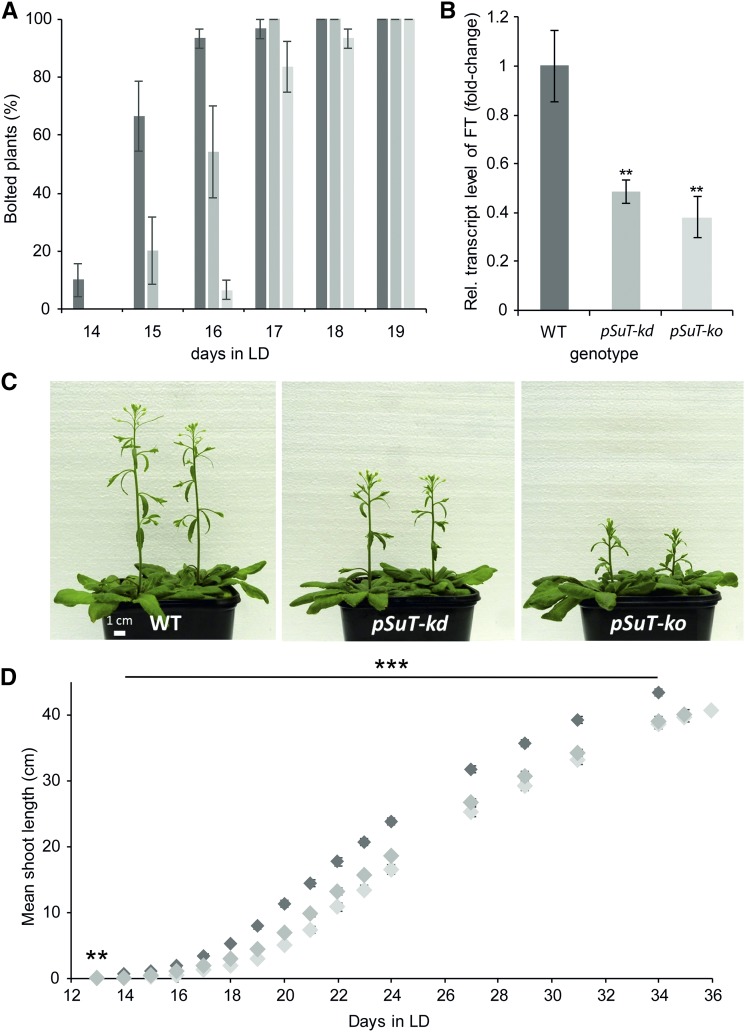Figure 7.
Analysis of the inflorescence development of wild-type (WT) and pSuT mutant plants. A, Determination of differences at the onset of bolting. Wild-type (dark gray bars), pSuT-kd (gray bars), and pSuT-ko (light gray bars) plants were cultivated for 4 weeks under standard conditions (120 µE, 10 h of light/14 h of dark) and transferred to LD conditions (250 µE, 16 h of light/8 h of dark) for flowering induction. When its shoot length reached 1 cm, the corresponding plant was defined as bolted. Data represent means ± se of three replicates with nine or more plants each and are given as percentages of the total number of plants per genotype (set to 100%). B, Plants were cultivated as described in A. Youngest leaves covering the apical meristem were harvested shortly before bolting of the first wild-type plant (when its meristem leaves tended to erect). The relative transcript level of FT in the different genotypes is shown. FT expression in wild-type plants served as a reference (set to 1). Data were normalized to the housekeeping genes At2g28390 and At5g62690. Data represent means of four or more biological replicates ± se. Significant differences compared with the wild type were calculated using one-tailed Student’s t test (**, P ≤ 0.01). C, Representative wild-type, pSuT-kd, and pSuT-ko plants 20 d after their transfer to LD. D, Determination of the total shoot length of wild-type (dark gray diamonds), pSuT-kd (gray diamonds), and pSuT-ko (light gray diamonds) plants after transfer to LD. Data represent means ± se of 29 or more individual plants per line. Significant differences compared with the wild type were calculated using one-tailed Student’s t test (**, P ≤ 0.01 and ***, P ≤ 0.001).

